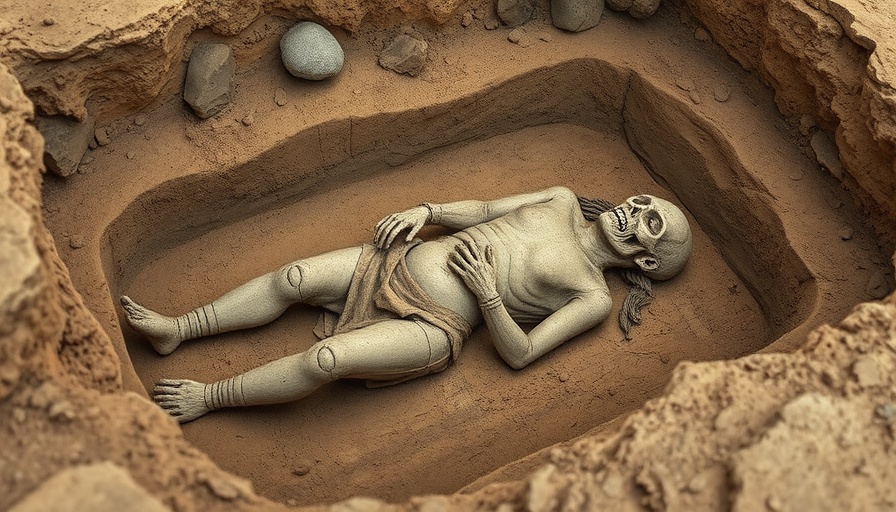
Rediscovering Ancient Culture: A Glimpse into Peru's Coastal Civilization
The recent discovery in Áspero, Peru, has unveiled the remarkably preserved remains of a woman buried over 5,000 years ago, showcasing the elite culture of the Caral-Supe civilization. This coastal society, predating pottery, is part of a group that marks the dawn of human civilization in the Americas, thriving in what is now a bustling region near Lima. The burial site, found within the revered Huaca de los Ídolos, offers more than just bones; it provides crucial insights into ancient social structures, trade networks, and rituals.
The Caral-Supe Civilization: A Cultural Powerhouse
The Caral-Supe civilization is not just another name in the ledger of ancient history—it's a testament to the ingenuity and resourcefulness of early societies that evolved independently. With monumental architecture that rivals the stone works seen in later cultures, the Caral-Supe were pioneers who harnessed their environment creatively to establish one of the Americas' oldest urban centers. It’s fascinating to note that this culture constructed vast complexes without contact with other ancient civilizations, underscoring their role as a foundational pillar in the tapestry of human history.
A Unique Burial: Indicators of Elite Status
The woman, believed to have been between 20 and 35 years old at the time of her death, was wrapped in luxurious materials—cotton fabrics and reed mats included, as well as elaborate adornments such as a headdress made from fibers and decorated with elaborate bundles. Such intricate burial practices hint at her status within this society; she was not merely a participant but likely held significant influence. Archaeologist Ruth Shady Solís, who led the excavation, emphasized the importance of these finds in understanding gender roles in early societies. Why was she buried with such esteemed materials? Could this reflect a society where women wielded considerable power?
Trade and Exchange Networks: A Window into Ancient Economics
Among the artifacts discovered were baskets filled with 30 sweet potatoes and various animal remains, hinting at a sophisticated economy and trade networks spanning vast distances. Items such as a toucan beak adorned with beads from the Amazon illustrate both resource sharing and cultural exchange—suggesting that the Caral-Supe civilization was connected to traders far beyond their immediate environment. This exceptional finding compels us to rethink the timeline of economic development in pre-Colombian Americas.
Connecting the Dots: Unearthed Relics and Their Relevance
This significant finding strengthens previous discoveries of elite burials, including the "Lady of the Four Tupus" and an elite male, discovered just meters away. Collectively, these findings illuminate the hierarchical nature of the society that thrived in Áspero, shedding light on how power dynamics functioned within the community. How does this knowledge reshape our understanding of ancient cultures in comparison to modern societies?
The Legacy of Áspero: Lessons for Our Future
As we learn from excavations like those at Áspero, the past educates us about the complexities of ancient communities. Each discovery unravels layers of human experience, resilience, and innovation that can inspire current civilizations to foster connectivity and cooperation amidst their own challenges. So, what can we take from this ancient society? A reminder that human evolution, both culturally and socially, often thrives on the interconnectivity of diverse peoples and ideas.
As we celebrate these archeological milestones, let’s also recognize the teams working tirelessly to uncover the heritage that shapes our understanding of humanity's journey. The careful unearthing of Áspero allows us to glimpse how our ancestors lived, loved, and connected. With each artifact, we connect deeper with a history that is both uniquely Peruvian and universally human.
 Add Row
Add Row  Add
Add 




Write A Comment